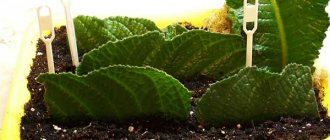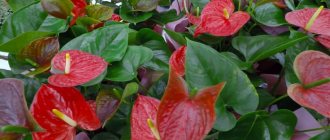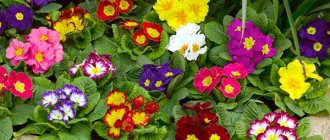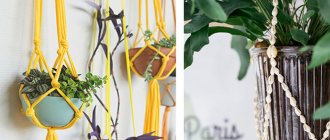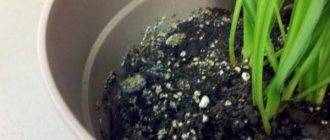Top businesses
How to make money growing indoor plants and selling them online? A selection of unusual business ideas and trending concepts in the field of home floriculture.
For home gardening, you almost certainly already have everything basic: some space, water, light. But you will still need a small capital, which is necessary, at a minimum, to purchase seeds, children and soil with fertilizers. It will also take time and, most importantly, patience. There is practically no quick money here.
There are also more global disadvantages to growing and selling flowers. One of the main ones is that indoor flowers are not an essential commodity. Therefore, when people’s incomes fall, they postpone the purchase until better times and, in the best case, place your page or ad on Avito in their “favorites”. But, on the other hand, right now, with the development of social networks and the emergence of many channels for selling products available to the average person, is perhaps the best time to try to launch your project.
Business on Japanese kokedama
Kokedama is a Japanese way of growing flowers without pots, a type of bonsai art. This name translates as “moss-covered globe.” According to the simplest scheme, the earthen ball under the plant is wrapped in moss or other moisture-absorbing material (including artificial). For example, kokedama with coconut fiber look very beautiful. For kokedama, unpretentious indoor herbaceous plants such as dracaena, fittonia, nephrolepis, ivy or spathiphyllum are suitable.
Due to the fact that such balls are usually hung from walls or ceilings, the result is a very unusual and environmentally friendly decorative element. And besides, it allows you to refuse plastic pots. Caring for a kokedama is not entirely ordinary. For example, when watering, it is better to use the immersion method so that the mound is saturated with water within 20-30 minutes. You can make kokedama either yourself or by purchasing a blank on the Internet. Since few people in Russia have heard about kokedama, the markup on plants can be high.
Sale of compositions with tillandsias
Atmospheric tillandsias are exotic plants that do not require soil to take root, absorbing everything they need from the air. In this regard, amazingly beautiful compositions are created with tillandsias on stones, wooden stands and driftwood. Such compositions are sometimes made hanging or placed in florariums - the result is a rather unusual decorative element that will not leave anyone indifferent.
For tillandsias, one of the most important factors is the level of air humidity, which can be 60-65% or more. After flowering, the children are attached to driftwood, branches, pieces of wood or felt, placed on a pad of moss or coconut fibers and secured with wire or an elastic band. Naturally, the material should not be processed in any way, for example, with varnish or paint, and the presence of bark on the wood is desirable.
Naturally, the more unique a composition with tillandsia looks, the more expensive it can be sold. You can complement your work with unusual stones, shells and shells, branches, a wooden frame, and so on.
Mistakes of a florist entrepreneur
Any mistake by the florist will lead to a decrease in sales in the florist salon. The most common mistakes are:
- Incorrectly designed display windows. It is best to place ready-made bouquets on stained glass windows, which will become free advertising for the outlet.
- Unclear name. It is important that the client who reads the name can understand what kind of product is being sold in the store. It is best to give preference to laconic and simple names, for example, White Peony, Red Rose, Art Bouquet, Chrysanthemum, Anthurium.
- Withering flowers. The refrigerated display case should contain only fresh plants and bouquets. The refrigerator compartment must be clean. Wilting plants must be disposed of immediately.
- Chaos. The entrepreneur must adhere to the principle of displaying goods. Potted plants, bouquets, cards, soft toys, souvenirs and sweets should be placed separately from each other.
- Design that doesn't match the theme. It is important that the decor reflects the theme of the salon. It is recommended to paint the walls in light shades and use wooden furniture.
For the initial assortment, business owners purchase 500-700 flower stems, of which 65% are roses of various varieties and shades, as well as carnations and peonies.
Levitating pots and flowers
One of the popular and profitable niches today is levitating pots with flowers and indoor plants. Such pots actually float a few centimeters above a special magnetic platform and at the same time slowly rotate. Such gadgets work from the network, and there are no difficulties in “launching” them. On sites like “Aliexpress”, at the time of writing, such levitating pots are sold at retail for 4.5-5 thousand rubles, and they are sold wholesale for 1.8-2.5 thousand rubles.
As an option for making money, you can limit yourself to resale, but if you are growing small plants, for example, succulents, you can try selling them immediately in such levitating flower pots, offering them as a new exclusive product, for example, “levitating succulents.”
We study the sales market
To monetize a hobby, it is better to immediately decide on the target audience. It is impossible to satisfy all the needs of the market, but it is possible to do this for a large part of it.
Who buys plants and why?
Indoor gardening is a new trend, so the audience ready to buy potted plants is simply huge. Unpretentious indoor plants are used for offices: they create an atmosphere and help purify the air. Now, in times of open spaces, the concept of greening office premises is gaining incredible popularity. The trend is for tall decorative foliage options that do not require special care.
They also buy plants for apartments. They fit perfectly into the concept of modern design. Preference depends on the person. Some people just like to grow plants, while others try to fit them into the interior. On the wave of popularity, florariums are aquariums with plants. Concrete pots with succulents are in demand.
Popular houseplants act as gift additions in place of cut flowers.
What plants are in demand?
- Large decorative foliage. These are monstera, zamioculcas, chamedorea, ficus, dracaena, sansevieria. Growing them takes time, so it is easier for people to buy ready-made tall specimens. Often used to create accents in rooms.
- Blooming. Blooming always creates a feeling of celebration. Poinsettia and Decembrist are relevant in winter: it is during the cold period that their flowering peaks. With fertilizing and additional lighting, indoor maple - abutilon - blooms all year round. Ruellia, an evergreen and hardy house shrub, is also in demand.
- Unpretentious . Chlorophytum, tea rose (hibiscus), succulents, cacti require minimal attention. Among succulents, preference is given to aloe, kalanchoe, haworthia, sedum, and lithops. They are less susceptible to stretching in the absence of sunlight.
- Exotic . Venus flytraps, atmospheric tillandsias and other exotics are often purchased for creating interiors. They require special care, but at the same time are as liquid as possible.
- Some unusual specimens . Succulents with non-standard colors, vanda orchid, blooming tillandsia, anthurium with black flowers, variegated slipway, variegated forms, white indoor plants are popular with collectors and lovers of creating interesting phytodesign in the interior. The only difficulty is to find the first specimens and successfully propagate them.
Venus flytrap
Products made from stabilized moss
One of the biggest trends in interior design is the use of stabilized moss. With it, so-called phytowalls and panels are created to order, living paintings and tabletop design compositions are made, and used to make watches and three-dimensional letters. For the client, stabilized or sleepy moss is convenient because it does not require watering and maintenance, and for the entrepreneur, it is possible to grow it with your own hands, because recipes for the composition of the mixture for growing are easy to find on the Internet.
As long as stabilized moss is treated as an amazing novelty and the “wow” effect is triggered, a high markup can be made for products made from it. It looks natural, feels soft and elastic to the touch, and in addition can have different colors, which expands the boundaries of creativity. Cladonia deer (that is the name of the moss used), in addition to natural green and gray shades, can be decorated with natural dyes and have pink, blue, orange and purple colors.
Stabilized moss can retain its appearance and aroma for 5 to 15 years. Deer Cladonia takes all its moisture from the air. Optimal humidity conditions are 40-60%. You can start a business using stabilized moss with simple paintings and small compositions, and over time move on to more complex and large-scale projects and wall graffiti and panels. What’s especially nice about this business is that even when competitors appear, you can always find your own trick.
Sale of carnivorous plants
An interesting direction for home gardening is growing carnivorous plants. Among the most popular predators are sundew, Venus flytrap, nepenthes, butterwort, and sarracenia. Each of these plants has its own characteristics and hunting methods. For example, the Venus flytrap uses a trap formed from the edges of leaves and waits for prey with the valves slightly open. As soon as an insect crawls inside and touches the sensitive hairs, the “cage” will immediately slam shut and the digestion process will begin, which can take several days, a week or even more. In Nepenthes, traps resemble jugs that attract insects by smell. But once inside, the victim can no longer get out.
Basically, carnivorous plants require high air humidity (it is better to grow them in florariums), regular watering and diffused light, without a lot of direct sunlight and shade. In indoor conditions it is difficult to do without additional artificial lighting. With it, predators will grow better, and seeds will germinate faster. The choice of lamps and lighting largely depends on the growing region and the amount of natural light. On average, if there is almost no natural light, they need to be illuminated for about 12 hours, in summer - about 3-6 hours. Growing carnivorous plants, as in many other cases, is good to do in parallel with blogging about plant growing, which increases the credibility of the seller. You can sell carnivorous plants through sites such as Avito, Yula and Yandex Ads and using social networks Instagram and Vkontakte.
Rare plant cuttings
For those gardeners who have a large collection of plants at home, especially rare ones, it would be a sin not to sell rooted cuttings. For example, on ad sites you can sometimes find cuttings of rare species of philodendrons costing more than 100 thousand rubles! Of course, the sale of such options seems like a happy occasion, but there are a lot of mid-price plants, and some manage to make money on the most ordinary house flowers like tradescantia. Since Tradescantia takes root well and quickly produces new shoots, even by regularly selling cups with cuttings for 100 rubles, you can earn something.
Procedure for opening a flower shop
The most common way to register a flower business is to open an individual entrepreneur with the appropriate code (OKVED). For 2022, it is code 47.76.1, which includes retail trade in flowers, seeds, plants, in specialized stores.
After registration, you should purchase a cash register and register it with the tax office (on your own or with the help of cash register sellers who cope with this task in three days).
Next, you should obtain the conclusion of a sanitary-epidemiological examination and a permit to trade from municipal authorities, and keep a book of complaints and suggestions. When hiring staff, do not forget about health records.
This activity is not subject to licensing, and it is also not necessary to have a seal, which makes the registration procedure quite simple. Certificates when purchasing flowers are also not required, but most wholesale suppliers voluntarily undergo certification, so to increase the prestige of your product, do not forget to check this point with them and take, if available, a copy of the certificate for the product.
Growing Succulents
Succulents are a good option for a small home-based business. Succulents are unpretentious, do not take up much space, and can easily do without water for a whole month, making them convenient to deliver by mail over long distances. You can start growing succulents at home by equipping a corner of the house or room as a greenhouse, and in the future, equipping a greenhouse.
Despite all the advantages, succulents grow for quite a long time, and for small sizes, even visually, the buyer is not willing to pay dearly. Therefore, the more teenage succulents you have, the better, and flower arrangements can help sell them at a higher price. You can sell through Instagram, filling your account with interesting content on the topic and using paid promotion methods offered by this social network. Succulents, like most indoor plants, sell best in the spring and fall; sales decline is observed in the summer during the holiday period.
Video
The general director of a flower company shares his experience on how to profitably organize a flower business. Material taken from the ExpertTVOnline channel.
Do you have any questions? Specialists and readers of the BiznesOK website will help you ask a question
Was this article helpful?
Thank you for your opinion!
The article was useful. Please share the information with your friends.
Yes
No
X
Please write what is wrong and leave recommendations on the article
Cancel reply
Rate the benefit of the article: Rate the author
Discuss the article:
Growing cacti
A special category of succulents that is familiar to everyone is cacti. Cacti are not just sticks and balls with needles, they are a huge variety of plant species, sometimes completely different from each other. Thanks to the hardiness and unpretentiousness of cacti, they are perfect for indoor plant growing: you can either sell the surplus from your own collection or grow for sale. Russian entrepreneurs have long learned to send cacti by mail in such a way that they do not spoil or rot along the way - you can see packaging techniques in blogs on YouTube.
It takes on average about six months to grow a cactus to an adult that can bloom. The cost will depend on the type, but usually it is 300-2000 rubles or more. Flowering cacti usually cost twice as much. The disadvantages of growing cacti are growing competition, the abundance of cheap products in large chains with garden centers such as Ikea, the great influence of the population’s ability to pay (people are in no hurry to please themselves with cacti during crises and pandemics), the difficulties of expansion in the Russian climate - if you plan to build greenhouses, then you will have to spend a lot on heating systems and utilities.
Growing Lithops
Succulents and cacti are large categories, so it may be a little easier for you to specialize in a narrower niche. For example, on lithops. Lithops is a genus of succulents from the Aizaceae family, with more than 30 species. Due to their appearance and mimicry abilities, they are called living or blooming stones. Since lithops come from arid regions of the planet, where there is less than 50 mm of precipitation per year, they are unpretentious in watering and care, so they are perfect for growing at home. The main thing they need is to provide enough light. In the first half of the day they need 4-5 hours of direct sunlight, and in the second half there will be light partial shade.
Lithops themselves look very Instagrammable, so to sell them well, you definitely need to pay attention to the quality of the photos. Macro photography and the ability to create unusual compositions are especially important here. Since these are collective plants, it is better to plant them together - individually they begin to wither. Lithops begin to bloom at the age of 3-5; this usually occurs no earlier than mid-August.
Growing indoor palm trees
Palm trees are a very popular home decor item. Typically, palm trees are distinguished by the shape of their leaves - into fan palms (for example, Washingtonia, Livistona and others) and feather palms (coconut, date, Howea, Hamedorea, etc.). Palm trees decorate not only apartments, but also offices, halls of business centers and shopping malls.
Due to their size and appearance, palm trees can be expensive, but don’t think that you can make money quickly and easily. Especially if you decide to buy seeds or several palm sprouts to grow in your apartment as a kind of contribution or “passive income”. Sometimes, even after 5 years, the height of a palm tree can only reach about a meter and a half. For example, such versions of date palms on ad sites are sold for only 500-2000 rubles, and larger specimens 10-15 years old will cost about 5-10 thousand rubles.
How can you sell products?
One of the main difficulties of a home flower growing business is the need for quick sales, especially if we are not talking about potted plants, but about cut flowers. For this reason, the implementation channel must be taken care of first.
Contact wholesale centers that play the role of intermediaries in the market. Of course, they buy the product much cheaper than end consumers. Therefore, if you are able to produce large volumes of products, sooner or later you will decide to open your own retail outlet or rent a stall at the market.
Bonsai trees
Bonsai is not a specific plant, flower or tree, bonsai is the art of growing an exact replica of a real tree in miniature. You can control the growth and shape of a miniature by limiting the size of the root system, using pinching, ligating, pruning and other techniques. When forming a tree, you can adhere to one of dozens of styles, controlling the shape of the trunk, crown, directions of branches, and so on.
You can grow bonsai at home: you need wide window sills on the western or eastern side, plenty of light, the ability to take the plants out into the fresh air (since in most cases bonsai are not indoor plants) in the warm season and arrange water baths. Plants with small leaves and dense branches are best suited, for example, ficus benjamina, hawthorn, bougainvillea, pomegranate, callamondin. If we are talking about bonsai from trees and shrubs, you can use pine, spruce, larch, juniper, apple, quince, elm, mackerel and others, including local tree species, naturally taking into account their wintering period. Since the work is painstaking, bonsai are sold expensively and individually. And to sell their works at a higher price, they use original compositions, unusual pots and florariums.
Seasonality.
Flowers do not grow with the same consistency and do not have a fixed price all year round. In order to correctly compose the assortment in the store and calculate the costs of subsequent purchases, you need to study the varieties of flowers and the periods of their appearance in the markets. Thus, a universal flower is the rose, which is popular and available for purchase all year round. But you can’t fill the counter with just one rose. In the spring, you should focus your assortment on all sorts of tulips, and buy carnations closer to May. In summer, the greatest variety of seasonal flowers is chamomile, gladiolus, alstroemeria, which allows you to expand the assortment. Also in summer it is necessary not to miss peonies, the season for which is extremely short, but the demand is quite high. In autumn, in addition to the chrysanthemums that have appeared, you should purchase soil, fertilizers, and pots, since this is the time to replant indoor flowers. Winter is the most expensive period for purchases; frost-resistant callas, lilies, and orchids are purchased. It is better not to plan the launch and opening of your business for the winter if you are starting from scratch.
Orientation and sufficient knowledge of information is a necessary aspect that will help you be competitive in the market, especially in a small town.
Sale of compositions and florariums
One of the trends in sales in general is the sale of everything possible in boxes, sets, baskets, and so on (we gave 35 business ideas for sets here). Plants and flowers are no exception. Flower arrangements today are sold in florariums of unusual shapes - these are either geometric multifaceted florariums, or florariums in the form of vessels, balls, large jars, and so on.
But the choice of vessels is far from the most important thing when creating a florarium. Here we are talking about creating a sustainable ecosystem, so you need to master the “material parts”. The selected plants should be compatible with each other, unpretentious and grow slowly. The principle here is that in closed vessels the plants should develop independently, requiring virtually no attention from the owner. The main thing for future owners is not to place the system in direct sunlight and water it several times a month.
Selling flowers in florariums requires a special approach to their design, a sense of taste and high-quality photographs are required. But thanks to all the efforts made, you will have more freedom in assigning a markup. Florariums sell well through social networks as gifts and for holidays, so you should have a lot of forms, plants and materials in stock. Accordingly, investments in this business will be high.
Flowers for the lazy: how to make money on plants that do not require care
One day, marketer Ekaterina Semyonova saw unusual flowers at an exhibition that grew without watering - on their own. She found out that the amaryllis bulbs were treated with a special compound that allowed them to grow without any care. This flower not only interested Catherine from an aesthetic point of view, but also became the main element for her business. Ekaterina Semyonova told the Biz360.ru portal about how to make money on flowers that do not require special care.
Dossier
Ekaterina Semyonova
, 31 years old, entrepreneur from Moscow, founder of a flower company. Graduated from the Financial University under the Government of the Russian Federation with a degree in marketing. Before launching her own business, she worked as a marketer in jewelry and alcohol companies. In 2022, she founded a project to sell plants that do not require care, Happy Bulb.
Put down roots
During maternity leave, marketer Ekaterina Semyonova decided to open her own business - and for this she went to study business courses. To complete the studies, it was necessary to choose the direction in which the aspiring entrepreneur would like to develop. Ekaterina chose floristry. “Back then this area seemed very simple to me. Now it’s even funny that I once thought so,” Ekaterina Semyonova sneers.
The first idea of her project was to sell inexpensive bouquets in craft paper for 500 rubles. When Ekaterina found out the purchasing prices for fresh flowers and calculated other costs (rent, logistics, storage equipment, work of a florist, administrator, etc.), her enthusiasm diminished. But they didn’t give up.
To delve deeper into the topic, Ekaterina completed floristry courses and began attending specialized exhibitions. At one of them - Flowers Expo - she saw amaryllis bulbs that were coated with a paraffin-based composition and did not require watering. The plants were brought to Moscow by a company from Holland, and such a product was new on the domestic market.
“It looked like a large onion the size of a grapefruit, covered with something shiny. She was very attention-grabbing. I liked this bulb, I bought it for home to lift my spirits,” recalls Ekaterina.
And after some time, the idea came to her to sell not ready-made bouquets or flowers in pots, but these bulbs. And so it was born, which is the only one in Russia that deals with covering plants using the technology of the famous Dutch flower corporation Nowaterflowers.
A coating created on the basis of paraffin allows you to grow a flower from a bulb without watering. The flower develops at the expense of the resources of the bulb itself.
Ekaterina herself does the processing of the bulbs, this is completely handmade. “It takes 30 minutes to process one bulb. If there is a circulation, then everything happens faster. The composition cools for about 20 minutes, and then finally hardens - like ordinary paraffin,” explains the entrepreneur.
Sometimes matte or glossy paints and glitter are added to the composition. They serve only a decorative function, there is no practical benefit. The flower appears from the bulb 3-4 weeks after applying the composition and blooms for one to two weeks.
From Instagram to supermarket shelves
In 2022, Ekaterina began selling her bulbs through a page on. Radio “Silver Rain” helped her get her first order, which in December launched the “Bank of New Year’s Ideas” column - in which the presenters talked about unusual businesses. Ekaterina wrote about her project Happy Bulb - and they talked about it on air. On the same day, the first client found her on Instagram and placed an order.
And a few months later, such a large order appeared that because of it, the project had to be hastily scaled up. Ekaterina Semyonova called the Azbuka Vkusa retail chain to find out how much it would cost to rent space in the checkout area. There she was going to display her bulbs. But by chance she came across category managers who became interested in her product. They offered to go online with him.
“It’s actually not difficult to get online if you have a really interesting product that has no analogues,” sums up Ekaterina Semyonova.
To provide a supply for the trading network, the girl invested about 200 thousand rubles of her own savings into the business. She spent this money on purchasing 600 amaryllis bulbs in Holland, renting a small warehouse in an industrial area and hiring several workers on piecework wages. Hired employees helped coat the bulbs with a special compound, pack and put the goods into boxes.
The first batch of amaryllis in the ABC of Taste, according to Ekaterina, “was a disaster.” The entrepreneur managed to earn 200 thousand rubles of net profit, which she immediately invested in further development - the purchase of bulbs, ingredients for the composition, design, packaging, promotion.
“Azbuka Vkusa” still purchases single batches of bulbs without watering for various holidays. But another retail chain, Respublika, has become a regular buyer of Happy Bulb products. Every month Ekaterina Semyonova ships them up to 400 units of goods. In total, this sales channel brings in a quarter of the profit.
Expansion of the range
Today, Happy Bulb offers three types of products: bulbs without watering, herb farms with automatic watering, and compositions in the ground, which are a replacement for living bouquets.
“Interior composition in the ground is a fairly new direction in floristry, but it is actively developing. Creating such a composition is quite a troublesome task, because the work is dirty and long. It takes from 30 minutes to several hours to compose one composition, and 15-20 minutes for a living ordinary bouquet,” explains Ekaterina.
Any potted plant can become an element for compositions in the ground - succulents, orchids, and hydrangeas. Such flower arrangements allow you to avoid writing off plants, which always happens in floristry. Ekaterina personally composes the compositions and does not trust this matter to anyone.
About a year after launching Happy Bulb, Ekaterina became interested in self-watering greenery farms. The design is a glass container that is inserted into a flowerpot, and a rope is pulled through it - with its help, moisture is supplied to the plant.
“You can, roughly speaking, forget about this farm for a week or even more, and it itself will sign with liquid all this time. The so-called wick irrigation is a Soviet development, which is used today by agronomists all over the world,” says Ekaterina Semyonova.
The kit also contains everything you need for growing herbs: peat, fertilizer, seeds. So far the assortment includes rosemary, basil, arugula, mint, and lavender will soon be added.
The idea to produce farms came to Ekaterina at the very beginning. However, it took about a year to find a supplier of the required packaging.
“It’s difficult to find a manufacturer in Moscow who can make the required plastic cups. Another difficulty is that plastic production is expensive in Russia, unlike China. Only a year later we managed to find a production facility in Moscow that produces plastic pots at our request,” says Ekaterina Semyonova.
How sales work
Each item in the company’s product range has its own effective sales channels. Compositions in the ground sell well through Instagram - about 15-20 pieces per month. Their price varies from 2,500 to 20,000 rubles.
“Now compositions in the ground have become more premium, the price tag is growing. Because if you sell compositions at a price of 2,000 rubles, this means setting a margin of 1,000 rubles, or even less. But sometimes for the sake of one composition you have to go to the base or to the greenhouse. Therefore, now, on average, soil compositions usually cost around 5,000 rubles,” explains Ekaterina Semyonova.
Herb farm sales are best at retail. On average, about 200 pieces are sold every month, and only through the Respublika chain stores. Their cost in the store is about 2000 rubles.
The same network, together with Instagram, actively sells bulbs without watering. The price for one onion is 1,490 rubles. To reduce the number of write-offs of unsold and spoiled bulbs, they are sold only on the eve of the holidays. The busiest dates are New Year and March 8th.
Economics of the project
Ekaterina buys seed material for farms in Russia. But he orders the bulbs through suppliers in Holland. He says that everything related to bulbous plants is produced only in this country.
After the seed is delivered, it is sent to a warehouse rented specifically for this purpose. “Our technologies do not require large areas. So we do it in a small room, where we cover the plants with a special composition and store them right away,” notes Ekaterina Semyonova.
Outside of holidays, the demand for flowers without watering is difficult to predict. Therefore, a batch of goods is usually created for a specific order. If we are talking about several pieces, then Ekaterina can handle it herself. For large orders, she hires employees on a piecework basis - she has been cooperating with them for several years. They apply the composition to the bulbs according to the instructions, one of them is responsible for quality control.
“For now, we do everything manually, since the manufacture of a special machine costs 400-500 thousand rubles. It’s cheaper to hire people to cover each batch,” says Ekaterina.
The project also includes an SMM specialist, an accountant and a driver who delivers orders.
The main cost items of the project are warehouse rent, payment of utilities, advertising and promotion, purchase of goods, remuneration of hired employees, taxes. The company's monthly profit is 200-250 thousand rubles per month.
What's next
Now Ekaterina Semyonova is looking for ideas to expand the line of plants that can grow without care or with automatic watering. Mistakes in the flower business are costly. Flowers and plants are perishable goods. Ill-conceived experiments with a new product can lead to a loss.
“Last year our coniferous wreaths sold poorly. We supplied them to the Respublika network on New Year's Eve in such large quantities that they did not sell. We only bought half the lot. We may have released the product early - December 17th. People thought that the wreaths would be stale by the New Year,” Ekaterina gives an example of a failed experiment with the assortment.
In the future, she would like to put her project on an independent track and move into another field. According to Ekaterina, she came to the flower project by accident and always remembers it.
“I’ve never been “sick” with flowers, I just see something cool in bulbs without watering. I believe that a person should do what brings him true pleasure. Therefore, now I’m thinking about delegating the entire process to hired managers, and not dealing with the operating system anymore. I want to try myself in a business in which I see more meaning for myself personally, and, therefore, I will work more involved,” says Ekaterina Semyonova.
Flower pots and stands made of stumps and driftwood
If you haven’t found yours among the ideas presented above, perhaps you should pay attention to related areas. For example, you can create unusual pots and flower stands. Since everything natural is in fashion today, flowerpots and various multi-level stands made of driftwood and stumps have become in demand. There are many ideas on this topic on the Internet, including not entirely obvious options. A lot depends on the shape of the tree itself. The more original it is, the better. But the idea itself is extremely important. Sometimes craftsmen combine wood and sea pebbles, or play with the shape of the pot, stretching it in size so that it resembles more of a totem pole.
In any case, it’s not worth using any snags and stumps right away. The tree must be dried, sanded (if you are not going to leave the bark on purpose), and adapted for planting flowers. Often somewhere you have to cut something down, or, on the contrary, attach a piece of wood. So, the process is creative. The craftsmen who create such pots post their work on the “Fair of Masters” site for handmade goods. We talked about how to sell on it here.
Mikhail Semynin
(c) www.openbusiness.ru - portal of business plans and guides for starting a small business
02/03/2022
Save the article to carefully study the material
Remember article
You can save this page using:
